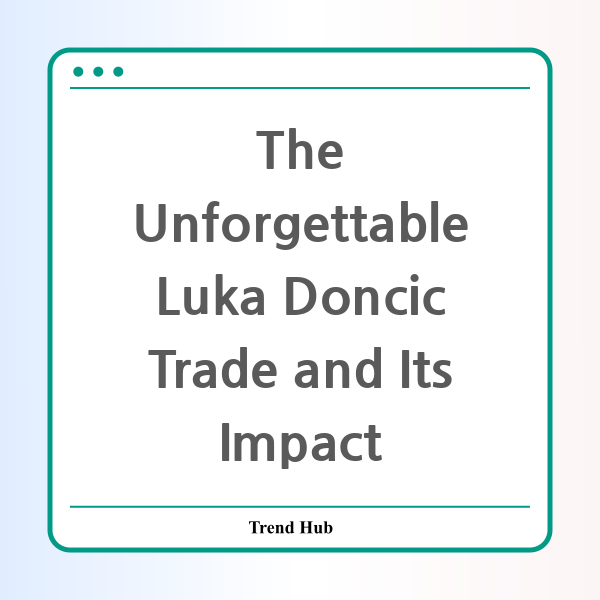* This website participates in the Amazon Affiliate Program and earns from qualifying purchases.

What does it take for a franchise to trade away a generational talent like Luka Doncic? The recent shocking trade that saw Doncic move to the Los Angeles Lakers in exchange for Anthony Davis has left fans and analysts alike shaking their heads in disbelief. As we unpack this monumental decision and its implications, we explore the behind-the-scenes dynamics that led to this earth-shattering trade.
On January 7, the quiet ambiance of Ascension Coffee in Dallas transformed into the epicenter of one of the most audacious trade conversations in NBA history. General managers Nico Harrison of the Mavericks and Rob Pelinka of the Lakers engaged in a dialogue that would reverberate throughout the league. With a trade of this magnitude, where Doncic—a 25-year-old MVP contender—was exchanged for Davis, a celebrated big man, secrecy and discretion were paramount.
Both organizations carried deep scars from their previous trade blunders. The Lakers, once burned by a failed trade for Chris Paul and the circus that surrounded the Anthony Davis trade saga, learned valuable lessons about discretion. This time, very few individuals were privy to the discussions leading up to the trade. Even renowned figures in the league like Danny Ainge were caught off guard, receiving only a fractional warning about the impending deal.
As the dust began to settle following the announcement, the reactions were swift. Fans in Dallas expressed their outrage with protests, and players similarly voiced their shock, highlighting a general sense of betrayal among those who viewed Doncic as the face of the franchise. The sentiment was particularly poignant considering Doncic’s history with the team and the city, which had embraced him since he was drafted.
However, Harrison’s strategy was not without its motivations. His decision to trade Doncic stemmed from ongoing concerns about the player’s work ethic and commitment. Despite incredible on-court performances, including leading the league in scoring, there were deep-seated frustrations behind the scenes regarding Doncic's conditioning and engagement with the Mavericks’ training staff. As a result, management felt compelled to make a bold change that they believed might not only reshape the team’s future but also ignite a different level of performance in Doncic.
The trade consequently shifted the balance of power in the NBA, with the Lakers emerging as an immediate title contender, while the Mavericks entered a phase marked by uncertainty and introspection. The Lakers, now with Doncic integrated into their lineup, appeared ready to reclaim their status in the league, while the Mavericks faced the burden of rebuilding around a new vision.
Yet, as the shockwaves of the trade continue to ripple through the league, the ultimate question remains: will Doncic prove the Mavericks wrong? This trade sends a loud message about accountability and the expectations placed on a player of his caliber.
In response to the trade, Doncic expressed gratitude to the fans and the city, highlighting his appreciation for their unwavering support. His commitment to delivering a championship, albeit in a new uniform, remains at the forefront of his mission moving forward. As the NBA landscape evolves, the ramifications of this trade will be scrutinized for years to come, and its impact on both franchises could well define a generation.
In conclusion, the Luka Doncic trade serves as a poignant reminder of the complexities of professional sports, where talent, management, and relationships intertwine in sometimes unpredictable ways. While the future of both the Mavericks and the Lakers hangs in the balance, both organizations are embarking on new chapters filled with hope, ambition, and a desire to win.
* This website participates in the Amazon Affiliate Program and earns from qualifying purchases.